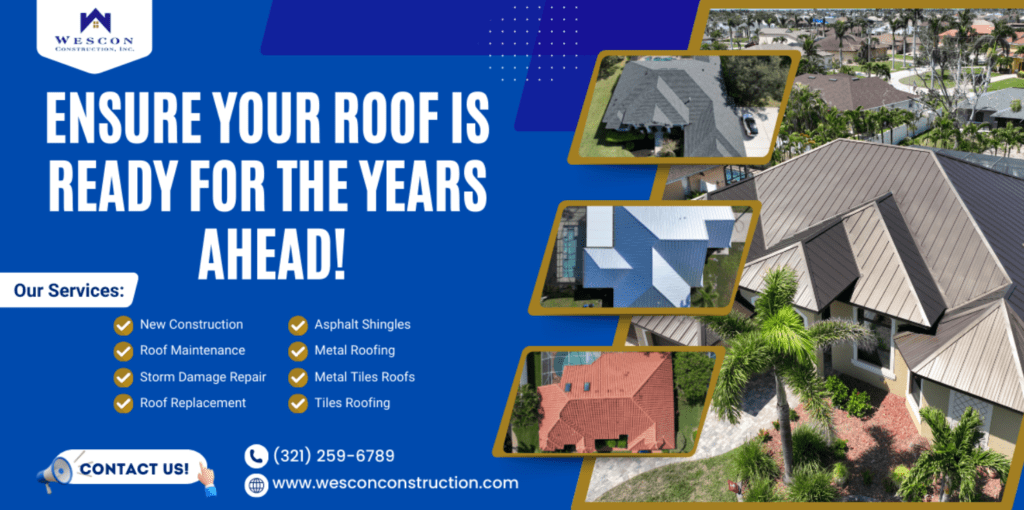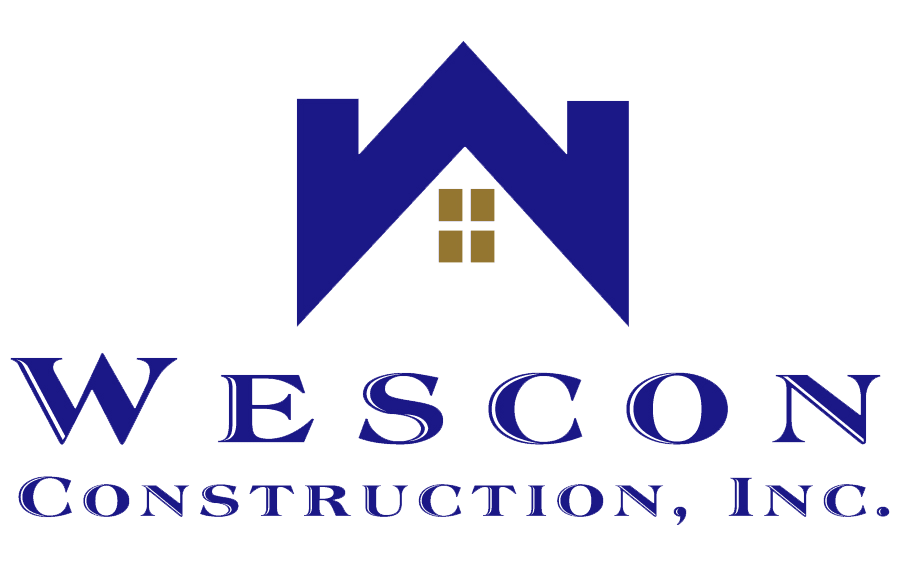Most Common Roofing Issues Of 2024
As we move through 2024, homeowners face various roofing issues that can affect the safety and comfort of their homes. Understanding these common problems and how to address them can save you time, money, and stress. This article dives into the most frequent roofing issues of 2024 and offers practical solutions to keep your roof in top shape.
Key Takeaways
- Roof leaks and moisture intrusion are common problems that can lead to significant damage if not addressed promptly.
- Shingle damage and deterioration can be prevented with regular maintenance and timely replacements.
- Flashing failures can compromise roof integrity, making repairing or replacing damaged flashing quickly crucial.
- Proper gutter and drainage systems are essential to prevent water accumulation and related damage.
- Good roof ventilation and insulation are essential for energy efficiency and preventing structural issues.
Roof Leaks and Moisture Intrusion
Roof leaks are a common issue that can lead to significant moisture damage in your home. Early detection is crucial to prevent extensive damage and costly repairs.
Shingle Damage and Deterioration
One of the most common roofing issues that homeowners deal with is shingle damage. Time, sun exposure, debris, and strong storms can all cause damage to shingles. Even though broken shingles may not seem urgent, they put your roof at risk for more serious problems. The longer you put off fixing broken shingles, the more probable it is that you’ll have issues that go beyond superficial issues.
Types of Shingle Damage
Damage to shingles can take several forms, including curling, splitting, and granule loss. Buckling or curling shingles indicate aging or inadequate attic ventilation and weaken roof defense. Shingles with rolled or bent edges are a telltale symptom of this problem.
Preventive Measures for Shingle Longevity
Regular maintenance is key to extending the life of your shingles. Here are some steps you can take:
- Inspect your roof regularly for signs of damage.
- Trim overhanging trees or shrubbery to avoid abrasion.
- Ensure proper attic ventilation to prevent moisture buildup.
- Clean your gutters to avoid water backup.
When to Consider Shingle Replacement
Knowing when to replace your shingles can save you from more significant problems. Consider replacement if:
- Leaks are numerous or significant.
- Many shingles are damaged, worn, or missing granules.
- There is extensive water damage in the attic.
- The roof deck appears to be sagging or buckling.
- Your shingle roof is more than 15 years old.
Prompt repairs by professionals can prevent deeper, more costly problems.
Flashing Failures and Their Impact
Flashing is crucial for keeping your roof sealed and protected from water damage. It is installed around areas like chimneys, skylights, and venting pipes. If the flashing is not attached correctly, you will experience problems from the start.
Role of Flashing in Roof Integrity
Flashing plays a vital role in maintaining your roof’s integrity. It seals the seams and prevents water from seeping into your home. Properly installed flashing ensures that your roof remains watertight and secure.
Common Flashing Issues
Common issues with flashing include improper installation, damage from weather, and wear over time. Damaged flashing can lead to leaks and structural problems. If you notice any damaged flashing, it’s essential to call a professional for repairs.
Repair and Replacement Techniques
Repairing or replacing flashing involves removing the old material and installing new flashing. A professional should do this process to ensure it is properly sealed and secured. Regular inspections can help identify issues early and prevent costly repairs.
Damaged flashing compromises the integrity of your roof, leading to potential leaks and structural issues. Professional attention is necessary to address damaged flashing promptly.
Gutter and Drainage Problems
Importance of Proper Drainage
Proper drainage is crucial for maintaining the health of your roof and home. Clogged gutters can lead to water backing up and seeping under your roofing material, causing leaks and water damage. Ensuring your gutters are clean and free of obstructions is essential, significantly, as seasons change.
Common Gutter Issues
Gutters can become clogged with debris like leaves and twigs, especially during the fall and winter. This can cause water to back up and damage your roof and home. Regular cleaning and maintenance can prevent these issues. Consider installing gutter guards to reduce the amount of accumulated debris.
Maintaining and Cleaning Gutters
Cleaning gutters is usually straightforward, but sometimes, you may need to hire an expert to replace the system if there’s significant damage. Regular maintenance throughout the year can help you avoid potential roofing issues. Here are some steps to maintain your gutters:
- Inspect your gutters regularly for debris.
- Clean out leaves, twigs, and other blockages.
- Install gutter guards to minimize debris accumulation.
- Ensure downspouts are clear and directing water away from your home.
Regular gutter maintenance is a necessary job to protect your home from water-related issues.
By keeping your gutters clean and well-maintained, you can prevent expensive damage and ensure the longevity of your roofing system.
Roof Ventilation and Insulation Issues
A key component of the ventilation system in your house is your roof. Inadequate ventilation can cause issues both inside and outside of your house. Your attic will get wet from moisture buildup, which will increase the internal temperature of your house. This can harm your sheathing over time, causing shingle deterioration, insulation issues, rafter structural damage, and excessive energy bills. It can exacerbate structural and safety problems as well as ice dams throughout the winter.
Signs of Poor Ventilation
Proper roof ventilation helps regulate temperature and moisture levels in the attic. Without it, heat and moisture can build up, leading to rot, mold, and a weakened roof structure. Regular inspections are essential to ensure your attic is adequately ventilated.
Impact on Energy Efficiency
Inadequate ventilation can make your home less energy-efficient. When your attic overheats, your air conditioning system has to work harder to cool your home, leading to higher energy bills. Proper ventilation can help maintain a consistent temperature, reducing the strain on your HVAC system.
Improving Roof Ventilation and Insulation
Ensure your attic has balanced intake and exhaust vents to improve roof ventilation. Regularly inspect attic vents for blockages and clear them as necessary. Additionally, proper insulation can help maintain the correct temperature in your home, preventing heat loss in the winter and keeping your home cooler in the summer.
Structural Damage and Roof Sagging
Causes of Roof Sagging
Is your home experiencing a sagging roof? This can be a sign of structural damage or weakened supports. Common causes include water damage, excessive weight from snow or ice, and aging materials. Identifying the root cause early can prevent further issues.
Assessing Structural Integrity
To assess the structural integrity of your roof, look for these signs:
- The roof deck appears to be sagging or buckling.
- There is extensive water damage in the attic.
- Many shingles are damaged, worn, or missing granules.
A professional inspection can help you identify these problems before they escalate.
Reinforcement and Repair Options
Addressing structural damage promptly is crucial. Here are some repair options:
- Reinforcing weakened supports with additional beams or braces.
- Replacing damaged or rotting materials.
- Installing a new roof if the damage is extensive.
Quick action can prevent more costly repairs down the line. Don’t wait until it’s too late to address structural issues.

Impact of Weather and Environmental Factors
Effects of Seasonal Changes
Seasonal changes can significantly impact your roof. Temperature fluctuations can cause materials to expand and contract, leading to cracks and other damage. In the winter, snow and ice can accumulate, adding extra weight and causing leaks when they melt. During the summer, intense sunlight can degrade roofing materials, especially dark-colored ones.
Damage from Extreme Weather
Extreme weather events like hurricanes, tornadoes, and heavy storms can cause severe damage to your roof. High winds can rip off shingles, while heavy rain can lead to leaks and water damage. Hail can also cause dents and cracks in roofing materials. Inspecting your roof after any extreme weather event is crucial to identify and promptly address any damage.
Protective Measures Against Environmental Stress
To protect your roof from environmental stress, consider the following measures:
- Regular maintenance: Clean gutters, remove debris, and address minor repairs promptly.
- Proper ventilation: Ensure your attic has adequate ventilation to regulate temperature and humidity.
- Tree management: Trim overhanging branches to prevent them from falling on your roof.
- Choose the right materials: Opt for roofing materials suitable for your local climate.
Regular upkeep and choosing suitable materials can significantly extend your roof’s lifespan and protect it from environmental stress.
By taking these steps, you can help ensure your roof remains in good condition, regardless of the weather.
Weather and environmental factors can significantly impact the longevity and performance of your roof. From heavy rains to solid winds, your roof faces many challenges. It’s crucial to ensure your roof is in top condition to withstand these elements. Visit our website to learn more about how we can help protect your home.
Conclusion
In 2024, homeowners must be aware of common roofing issues to keep their homes safe and sound. These problems can lead to more significant issues if not addressed promptly, from leaks and moisture damage to misaligned shingles. Regular maintenance and timely repairs are key to preventing costly damage. Understanding these common roofing problems and knowing how to deal with them ensures your roof remains in good condition for years. Always consider professional help for significant roofing concerns to ensure the job is done correctly.
Need Expert Advice on Your Roofing Project? Contact us today!
"*" indicates required fields
